Photo: Alberto E. Rodriguez/WireImage.com
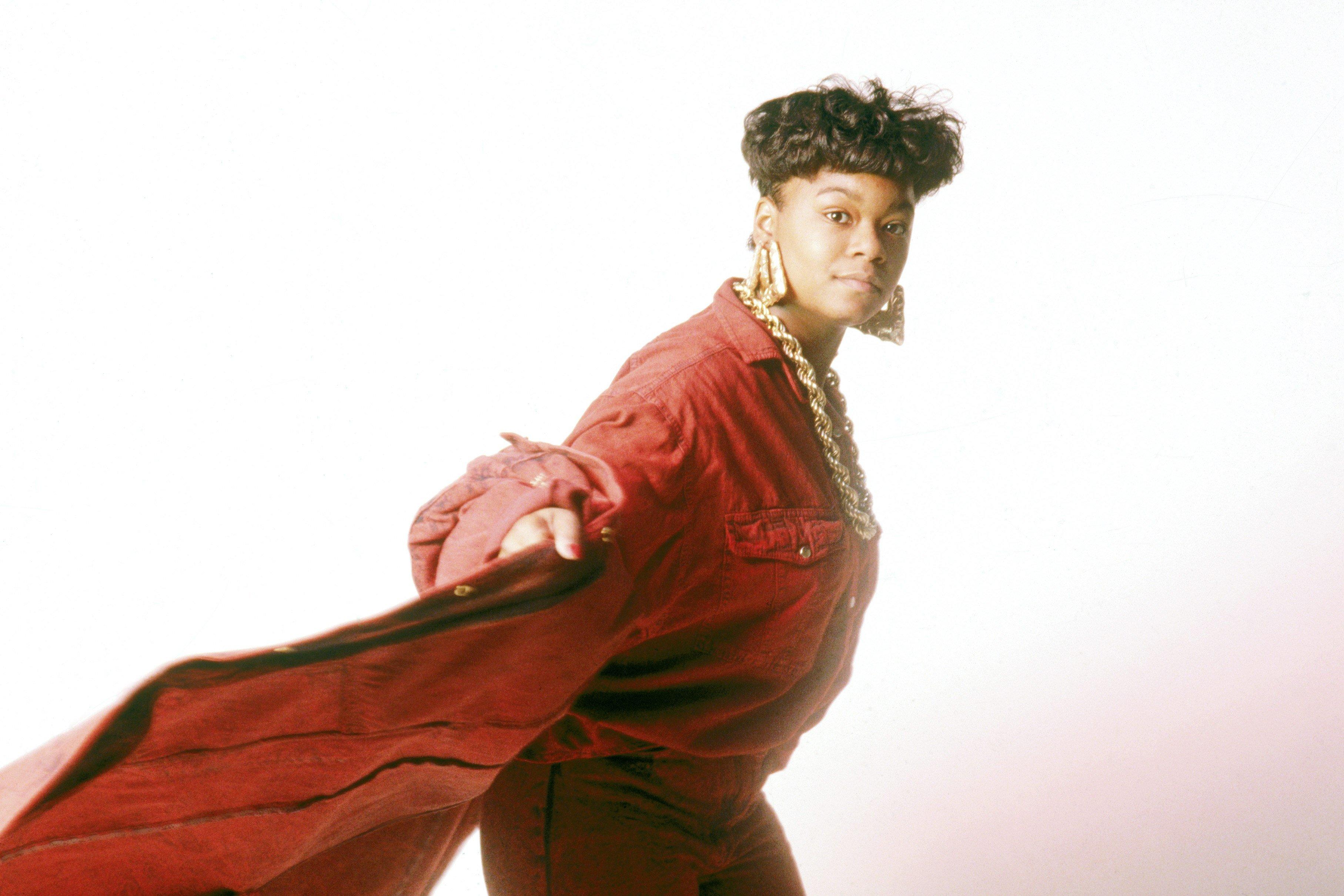
Roxanne Shanté circa 1988
news
Roxanne Shanté: Biopic Reveals The Story Of A Hip-Hop Music Pioneer
Ahead of the Netflix premiere of 'Roxanne Roxanne,' go inside the lasting influence and legacy of the indomitable emcee
Throughout history, many important movements have omitted the significant contributions of women. History simply became his-story. The same is true in hip-hop, a genre that is historically and largely dominated by men.
<iframe width="620" height="349" src="https://www.youtube.com/embed/IKA8H_LolNM" frameborder="0" allow="autoplay; encrypted-media" allowfullscreen></iframe>
But hip-hop pioneer Lolita "Roxanne Shanté" Gooden is adding more proof that #TimesUp with her new biopic, Roxanne Roxanne, which premieres March 23 on Netflix.
Starring Chanté Adams (portraying Roxanne Shanté) and Mahershala Ali, the movie takes viewers back to the early '80s when the fiery Queens, N.Y., rapper emerged as a streetwise hip-hop teen legend on the strength of her recording of "Roxanne's Revenge," which is cited as the first (ever!) battle response song recorded and released in hip-hop.
As the film spotlights, before female hip-hop artists like MC Lyte, Queen Latifah, Salt-N-Pepa, Lauryn Hill, and Lil' Kim sold millions of albums, the young Shanté was in the trenches fighting for a spot that already belonged to her and laying the groundwork for the great women who would follow in her footsteps.
"We all stand on the shoulders of someone," says GRAMMY nominee MC Lyte. "Because she was a solo artist so early on, she paved the way when it came to people being able to accept a female MC as an entity of its own."
That might be one of the reasons executive producers of the film, Mimi Valdes and Nina Yang Bongiovi, reached out to Shanté about making a movie. While hosting an event for the American Black Film Festival, Shanté remembers being approached by the ladies.
"They came down from the balcony after the show," Shanté recalls. "We've been looking for you and we want to make a movie about your life."
Within a year's time, Shante was at the Sundance Film Festival with a critically acclaimed movie about battling both on and off the mic.
Hip-hop was born in New York City. Before anyone had even given the music genre a name, Shanté was in the thick of it. Raised in gritty Queensbridge — the nation's largest public housing development and home to hip-hop legends such as MC Shan, Nas and Mobb Deep — Shanté was a ferocious competitor who played with verbs and nouns on street corners. In 1984, when she was only 14 years old, Shanté recorded the epic "Roxanne's Revenge" at the apartment of DJ Marley Marl, a neighbor and music producer.
<iframe width="620" height="349" src="https://www.youtube.com/embed/z93Qxl51g4M" frameborder="0" allow="autoplay; encrypted-media" allowfullscreen></iframe>
It was a powerful, unforgettable and game-changing rebuttal to UTFO's "Roxanne, Roxanne," a song about a woman named Roxanne who ignored the group's advances. Shanté's lyrics were delivered off the top of her head — no pad and no pen — and she literally did it in between laundry loads. On that night, she adopted the name Roxanne, added her middle name Shanté into the equation and emerged as a rechristened shining star.
"I was about 14 or 15 years old sitting in my living room in London when I first heard Roxanne Shanté," recalls Monie Love, British MC and member of the legendary hip-hop group Native Tongues. "She was articulate, smart and just a beast. She gave the guys what they dished out but with a woman's touch. She didn't have to become a man to beat a man, and I loved that."
Take Note: Women In Music
Indeed, Shanté was a powerhouse. Her voice and heart were bigger, stronger and more powerful than her petite teenage frame. She was brave, maybe even the bravest.
"She went toe to toe with the guys and that was exciting," recalls MC Lyte. "It was unbelievable."
"Roxanne's Revenge" would go on to sell more than 250,000 copies and spark the "Roxanne Wars," one of the most infamous and longest-running feuds in hip-hop. She had tapped into something — a girl beating the guys at their own game. She was hip-hop through and through but she was still a young teen, and many didn't think the two made a good couple. Case in point, Shanté recalls entering a rap competition that crowned the winner with a "best rapper” distinction.
"I went against 11 opponents in one day. All men," says Shanté, who remembers the whispers about how great her performance was throughout the day, which led her to feel confident that she'd win. "Kurtis Blow, who I'm great friends with today, was one of the judges, and he asked what it would take for me to lose. They told him that Shanté would lose if he gave her a 2."
And he did. Shanté was crushed. She had won but lost.
"[Roxanne Shanté] paved the way when it came to people being able to accept a female MC as an entity of its own." — MC Lyte
Despite these types of obstacles, Shanté has the spirit of a champion. She continued as a force in hip-hop as a member of the groundbreaking hip-hop collective Juice Crew. She released two solo albums, 1989's Bad Sister and 1992's The B*** Is Back, but neither achieved major mainstream success. Always up for a battle, she waged war against a slew of popular female rappers in 1992 with her single "Big Mama."
"She dissed all of us rappers by name. But I didn't respond," Monie Love remembers. "I had too much respect for her to answer back. She empowered me and inspired me to become a rapper."
<iframe src="https://tools.applemusic.com/embed/v1/album/330089743?country=us" height="500px" width="100%" frameborder="0"></iframe>
That's the funny thing when it comes to women in hip-hop. There can only be one queen. While the genre is competitive by nature, history has shown that men often collaborate and work well together. Women, on the other hand, are often pitted against each other.
"It's just the way it’s been structured for women in hip-hop," Shanté says.
But there's so much more to Shanté's story. Life doesn't suddenly end once the music stops, and it doesn't restart once a movie is made about you. Life is all the stuff in between and beyond. For Roxanne Shanté, it's about being a survivor, pioneer, trailblazer, mother, wife, friend, daughter, and an unbreakable spirit. Her life is marked by the power of believing in yourself despite what the world keeps showing you.
Years after that rap competition, Shanté bumped into Kurtis Blow. He told her that she really had won that rap battle years ago.
"At that time, hip-hop was just getting started, and people were starting to get major [record] deals," she recalls. "There was no way hip-hop was going to be taken seriously if the best of the best was a 15-year-old girl."
Too bad hip-hop didn't know who it was back then.
Catching Up On Music News Powered By The Recording Academy Just Got Easier. Have A Google Home Device? "Talk To GRAMMYs"
(Lakeia Brown is a freelance writer and host of the podcast, Decoded with Elle Bee. She has been published in publications like O, The Oprah Magazine, Essence and Complex. You can follow her on IG @decodedwithellebee.)
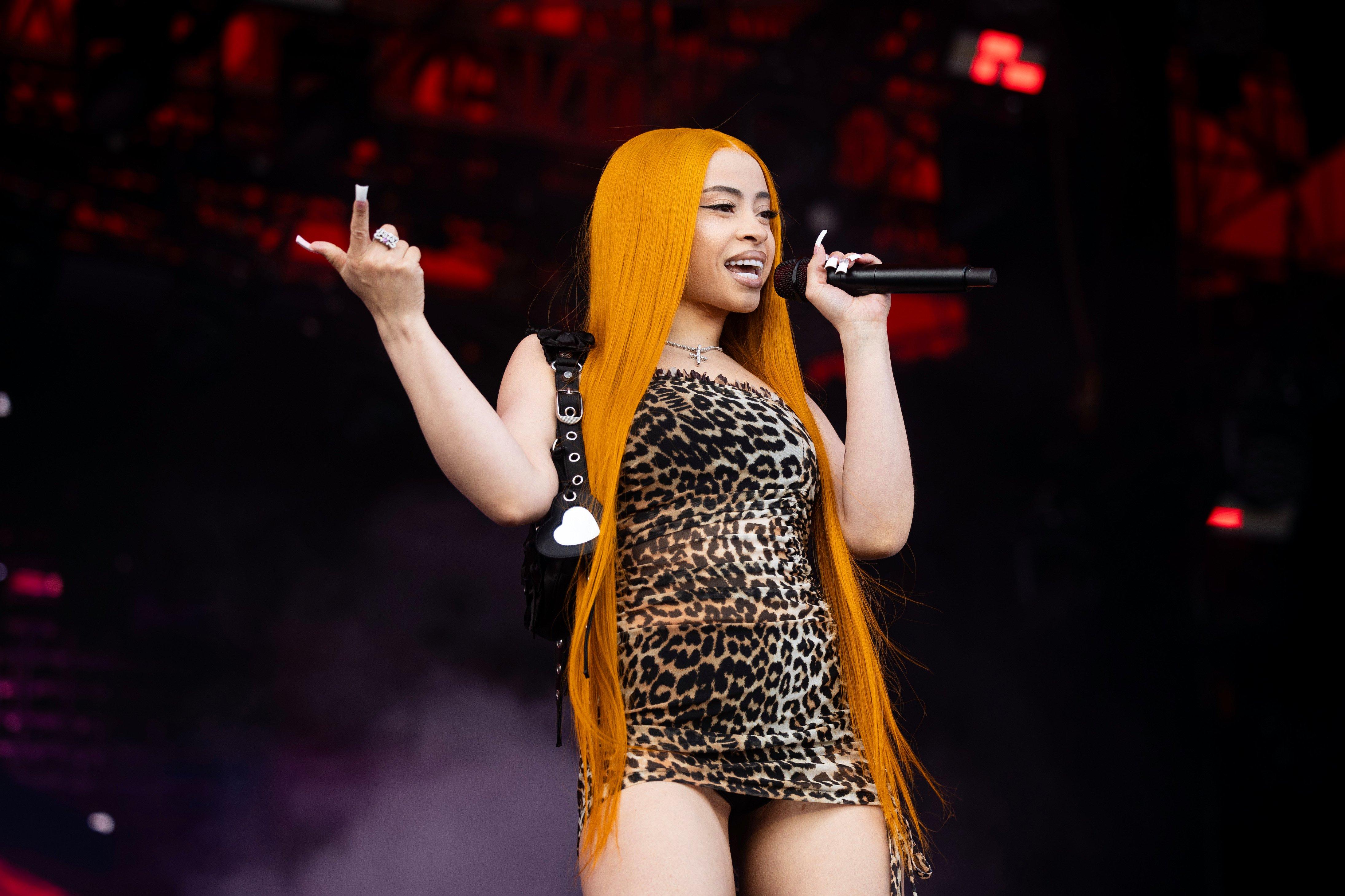
Photo: Matt Jelonek/Getty Images
list
Ice Spice Is The Drill Queen On 'Y2K!': 5 Takeaways From Her Debut Album
The 10-track LP clocks in at just under 24 minutes, but it's packed with insanely quotable one-liners, star-studded collaborations, and bold statements.
Since Ice Spice first caught our attention two summers ago, she's been nothing short of a rap sensation. From viral hits like her breakout "Munch (Feelin' U)," to co-signs from Drake and Cardi B, to a Best New Artist nomination at the 2024 GRAMMYs, the Bronx native continues to build on her momentum — and now, she adds a debut album to her feats.
Poised to be one of the hottest drops of the summer, Y2K! expands on Ice Spice's nonchalant flow and showcases her versatility across 10 unabashedly fierce tracks. She dabbles in Jersey club on "Did It First," throws fiery lines on lead single "Think U the S— (Fart)," and follows the album's nostalgic title with an interpolation of an early '00s Sean Paul hit on "Gimmie a Light."
Y2K! also adds more star-studded features to Ice Spice's catalog, with Travis Scott, Gunna and Central Cee featuring on "Oh Shh...," "B— I'm Packin'," and "Did It First," respectively. At the helm is producer RiotUSA, Ice Spice's longtime friend-turned-collaborator who has had a hand in producing most of the rapper's music — proving that she's found her stride.
As you stream Ice Spice's new album, here are five key takeaways from her much-awaited debut, Y2K!.
She Doubles Down On Bronx Drill
Ice Spice is one of the few ladies holding down the New York drill scene on a mainstream level. She's particularly rooted in Bronx drill, a hip-hop subgenre known for its hard-hitting 808s, high-hats and synthesizers — and according to the sounds of Y2K!, it’s seemingly always going to be part of her artistry.
"It's always time to evolve and grow as an artist, so I'm not rushing to jump into another sound or rushing to do something different," Ice Spice told Apple Music of her tried-and-true musical style.
While Y2K! may not be as drill-driven as her debut EP Like…?, the album further hints that Ice isn't ready to retire the sound anytime soon. The subgenre is the dominant force across the album's 10 tracks, and most evident in "Did It First," "Gimmie a Light" and "BB Belt." Even so, she continues her knack for putting her own flair on drill, bringing elements of trap and electronic music into bops like "Oh Shhh…" and "Think U the S— (Fart)."
She Recruited Producers Old & New
Minus a few tunes, all of Ice Spice's songs start off with her signature "Stop playing with 'em, Riot" catchphrase — a direct nod to her right-hand man RiotUSA. Ice and Riot met while attending Purchase College in New York, and they've been making music together since 2021's "Bully Freestyle," which served as Ice's debut single. "As I was growing, she was growing, and we just kept it in-house and are growing together," Riot told Finals in a 2022 interview.
Riot produced every track on Like.. ? as well as "Barbie World," her GRAMMY-nominated Barbie soundtrack hit with Nicki Minaj. Their musical chemistry continues to shine on Y2K!, as Riot had a hand in each of the LP's 10 tracks.
In a surprising move, though, Ice doesn't just lean on Riot this time around. Synthetic, who worked on Lil Uzi Vert's GRAMMY-nominated "Just Wanna Rock," brings his Midas touch to "Think U the S—." Elsewhere, "B— I'm Packin'" is co-produced by Riot, Dj Heroin, and indie-pop duo Ojivolta, who earned a GRAMMY nomination in 2022 for their work on Kanye West's Donda. But even with others in the room, Riot's succinct-yet-boisterous beats paired with Ice's soft-spoken delivery once again prove to be the winning formula.
She Loves Her Y2K Culture
Named after Ice Spice's birthdate (January 1, 2000), her debut album celebrates all things Y2K, along with the music and colorful aesthetics that defined the exciting era. To drive home the album's throwback theme, Ice tapped iconic photographer David LaChapelle for the cover artwork, which features the emcee posing outside a graffiti-ridden subway station entrance. LaChapelle's vibrant, kitschy photoshoots of Mariah Carey, Lil' Kim, Britney Spears, and the Queen of Y2K Paris Hilton became synonymous with the turn of the millennium.
True to form, Y2K!'s penultimate song and second single "Gimmie a Light" borrows from Sean Paul's "Gimme the Light," which was virtually inescapable in 2002. "We really wanted to have a very authentic Y2K sample in there," Ice Spice said in a recent Apple Music Radio interview with Zane Lowe. Not only does the Sean Paul sample bring the nostalgia, but it displays Ice's willingness to adopt new sounds like dancehall on an otherwise drill-heavy LP.
Taking the Y2K vibes up another notch, album closer "TTYL," a reference to the acronym-based internet slang that ruled the AIM and texting culture of the early aughts. The song itself offers fans a peek insideIce's lavish and exhilarating lifestyle: "Five stars when I'm lunchin'/ Bad b—, so he munchin'/ Shoot a movie at Dunkin'/ I'm a brand, it's nothin.'"
She's A Certified Baddie
Whether she's flaunting her sex appeal in "B— I'm Packin'" or demanding potential suitors to sign NDAs in "Plenty Sun," Ice exudes confidence from start to finish on Y2K!.
On the fiery standout track "Popa," Ice demonstrates she's in a league of her own: "They ain't want me to win, I was chosen/ That b— talkin' s—, she get poked in/ Tell her drop her pin, we ain't bowlin'/ Make them b—hes sick, I got motion." And just a few songs later, she fully declares it with "BB Belt": "Everybody be knowin' my name (Like)/ Just want the money, I don't want the fame (Like)/ And I'm different, they ain't in my lane."
For Ice, "baddie" status goes beyond one's physical attributes; it's a mindset she sells with her sassy delivery and IDGAF attitude.
She's Deep In Her Bag
In album opener "Phat Butt," Ice boasts about rocking Dolce & Gabbana, popping champagne, and being a four-time GRAMMY nominee: "Never lucky, I been blessed/ Queen said I'm the princess/ Been gettin' them big checks in a big house/ Havin' rich sex," she asserts.
Further down the track list, Ice Spice firmly stands in her place as rap's newest queen. In "BB Belt," she raps, "I get money, b—, I am a millionaire/ Walk in the party, everybody gon' stare/ If I ain't the one, why the f— am I here, hm?"
Between trekking across the globe for her first headlining tour and lighting up the Empire State Building orange as part of her Y2K! album rollout, Ice Spice shows no signs of slowing down. And as "BB Belt" alludes, her deal with 10K Projects/Capitol Records (she owns her masters and publishing) is further proof that she's the one calling the shots in her career.
Whatever Ice decides to do next, Y2K! stands as a victory lap; it shows her prowess as drill's latest superstar, but also proves she has the confidence to tackle new sounds. As she rapped in 2023's "Bikini Bottom," "How can I lose if I'm already chose?" Judging by her debut album, Ice Spice is determined to keep living that mantra.
More Rap News

Ice Spice Is The Drill Queen On 'Y2K!': 5 Takeaways From Her Debut Album

Watch Young MC Win Best Rap Performance In 1990
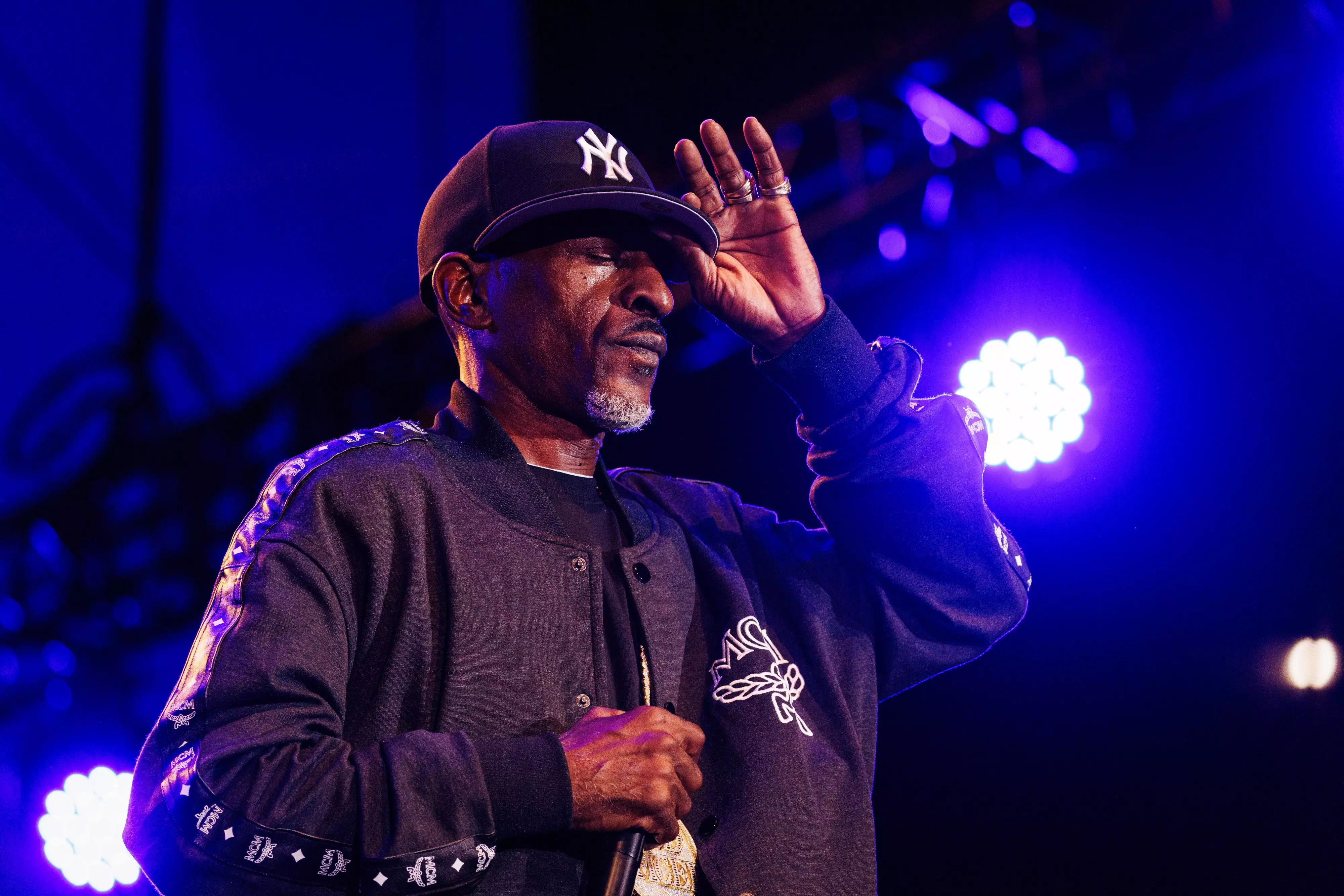
On Rakim's 'G.O.D's Network (REB7RTH)' The MC Turned Producer Continues His Legacy With An All-Star Cast
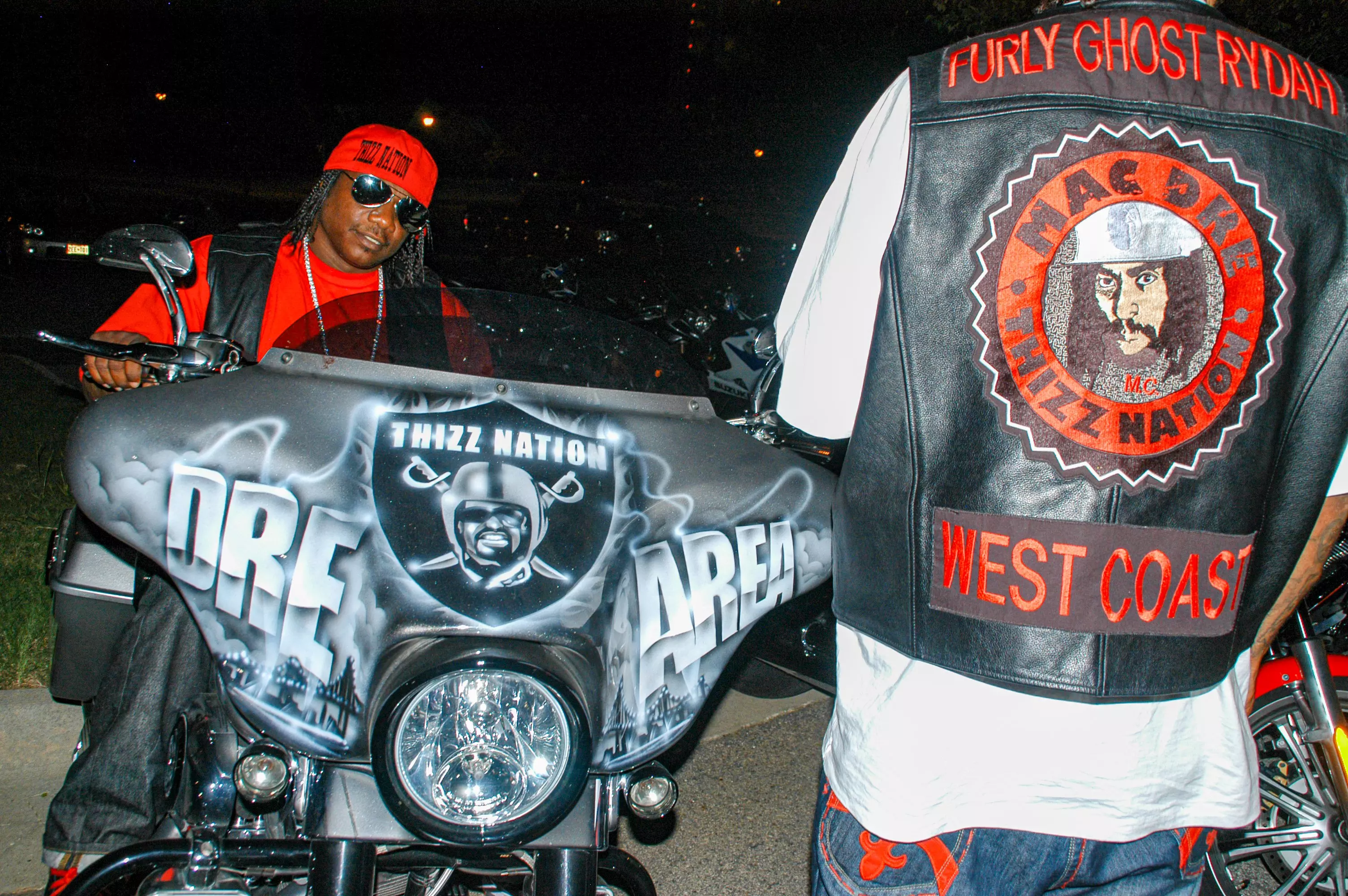
5 Ways Mac Dre's Final Living Albums Shaped Bay Area Rap
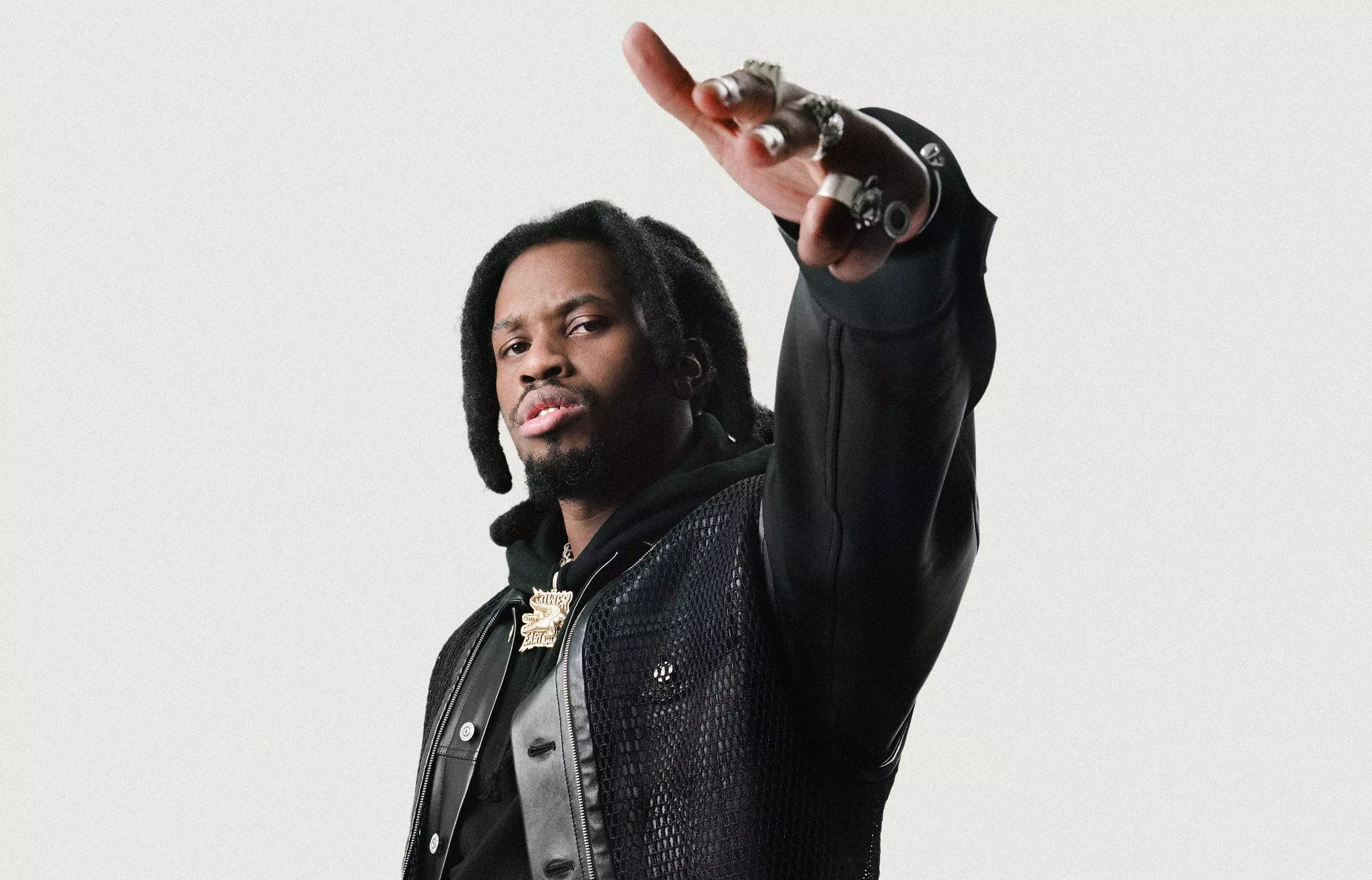
Denzel Curry Returns To The Mischievous South: "I've Been Trying To Do This For The Longest"
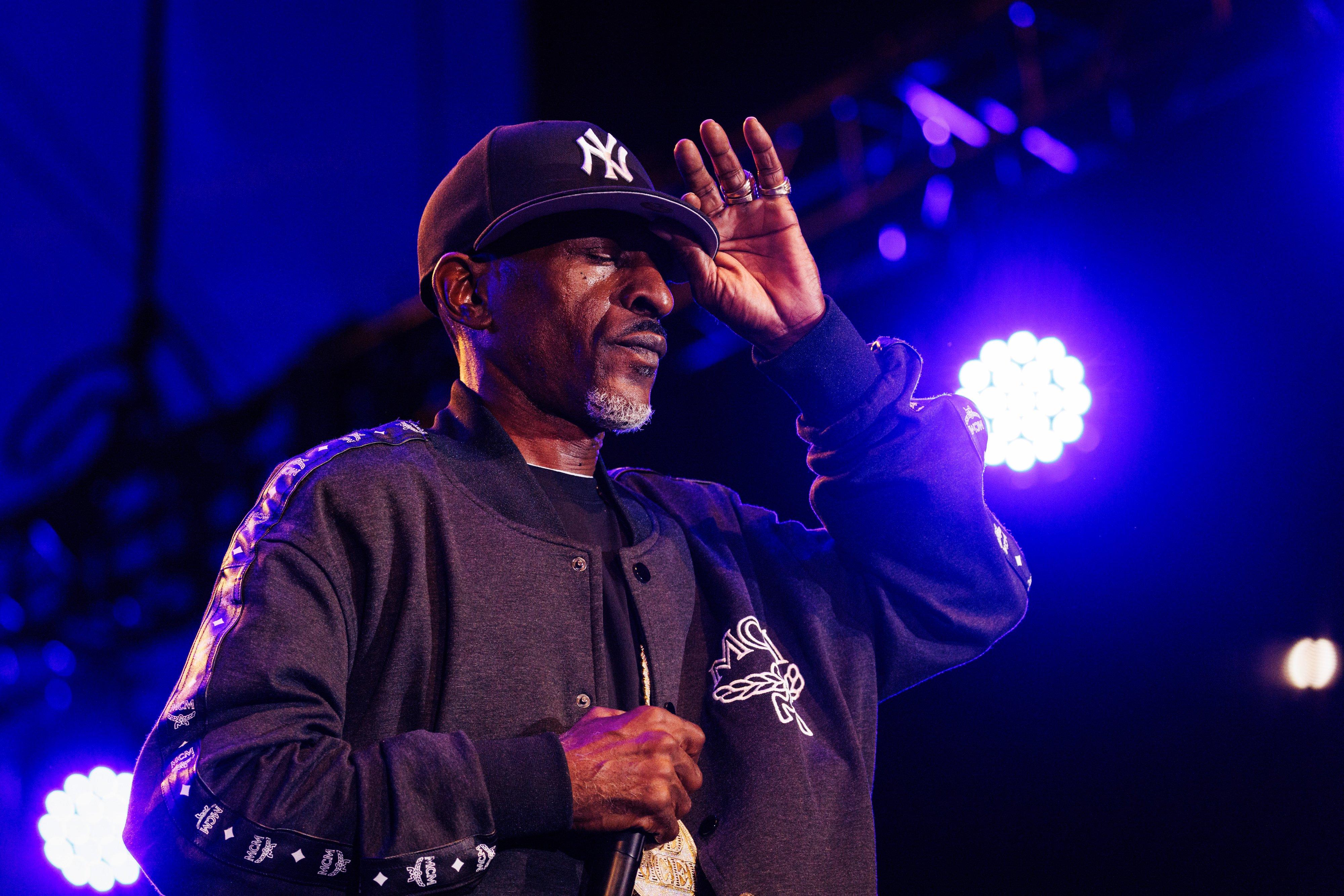
Photo: Richard Bord
feature
On Rakim's 'G.O.D's Network (REB7RTH)' The MC Turned Producer Continues His Legacy With An All-Star Cast
On his first project in 15 years, "God MC" Rakim produced seven songs and called on some of hip-hop's biggest names. The legend and his team detail his new album and working with Nipsey Hussle, DMX and Snoop Dogg.
Every album comes with a backstory, but not many come with two. Rakim's new project G.O.D's Network (REB7RTH), out July 26, came together in a few quick months, from signing a deal in February 2024 to completion in June. The process was spurred by one dedicated A&R person frantically combing through his network of rappers to get guest verses over beats produced by the God MC himself.
But to hear that A&R man, Matt "M80" Markoff, tell it, creating the seven-song project didn't take four months. It took four years.
"I've known [Rakim's longtime manager] Matt [Kemp] and Rakim since 2007," Markoff tells me when I get him on the phone in late June. "They're used to getting calls from me a couple of times a year just for, like, show referrals, verse referrals, things of that nature."
Back at the beginning of the pandemic, Markoff had been talking to the folks at Fat Beats, the venerable record store-turned-distributor that's a huge name in independent hip-hop. He mentioned Rakim's name to the company, and Fat Beats responded that they'd love a project from the God MC. The original pitch, Markoff remembers, was "a three or four song EP with some remixes."
Rakim quoted his price, Fat Beats agreed, and the project was underway, with the emcee meeting with producers to look for beats. But Rakim, who hasn't released a solo album since 2009's The Seventh Seal, is not one to be hurried.
"Ra was having [DJ] Premier and Pete Rock and Ninth Wonder and some of these people come to the studio," Markoff says. "Because of scheduling conflicts and stuff and, you know, normal course of life, it just wasn't right. The vibe wasn't there."
That's where Jazzy Jeff came into play. Rakim and the legendary DJ began working together and, per Markoff, it "just meshed." It seemed like, instead of a handful of songs, a full-length record was in the offing.
"As soon as they finish the first song, I walk into Fat Beats and say, ‘Hey, this is what we're doing now,'" the A&R man recalls. "Instead of Rakim with random producers, it's Rakim/Jazzy Jeff. That'll be huge."
Then…nothing.
A few years pass, and the Rakim and Jazzy Jeff project is still unfinished. (Rakim described its status as "We have a couple records already done.") Fat Beats, which was on the auction block (it was eventually sold in March 2024), wants its money back. Rakim obliges, and everyone seems set to forget about the whole thing.
Markoff, however, was not about to give up on working with the man he calls "my favorite emcee of all time."
The revamped album started its life as not an album at all. Instead, the original conception was a model Markoff had used before: licensing beats by people not typically thought of as producers. In this case, he'd be offering aspiring rappers the chance to get beats by arguably the most influential rapper of all time.
"He's taken people who are not necessarily known as producers and put together beat packages for them," manager Matt Kemp says of Markoff. "And then, one of the things he does is he goes out and he licenses those beats through a company that he has. If you're a European artist that wouldn't necessarily have access to things like that, you can get it."
So that, as of February of this year, was the (revamped) plan: have Rakim do six beats and one verse, and sell non-exclusive licenses, so that any rapper, anywhere in the world, who wants to use them in a song of their own could do so. This, indeed, was a vision that was followed through all the way to the finish line — you can see the end result released July 12, priced between $700-$1,050 depending on what you want to do with the beats and the rhyme, here.
But along the way to creating that package, things got significantly more complicated. As Rakim was making the beats, he found he really liked them. In some cases, he even wanted to rhyme on them himself.
"As the beats started coming together and Rakim was really in the studio and we started putting the rhymes onto them, we realized that it was bigger just than that [original vision]," Matt Kemp said.
The wheels started turning. Rakim, the God MC, as a producer? That would be a project worth sharing with the world, not just a few aspiring artists.
As it turns out, unbeknownst even to many Ra fans, the rapper has been making beats since the beginning. In fact, he produced — and played drums on — one of Eric B and Rakim's classic songs, 1992's "Juice (Know the Ledge)." So producing an entire project didn't seem like such a big stretch after all.
"I always was attached to making beats," Rakim explains to me. "But I got to the point where I'm confident with my production now. I got the chance to produce the album and jumped at the opportunity."
Rakim, as has been well documented over the years, comes from a musical family. His older brother Ronnie was a keyboard player of some note with his own claim on rap history, his other brother Stevie is also keyboardist who performed on some Eric B. and Rakim songs, and the rapper's aunt is the late R&B legend Ruth Brown. So when making beats, Ra will often play drums, bass, guitar, or piano. (He cops to enlisting one of his brothers if the keyboard part gets too complicated.)
He describes his production style this way: "You try to add on to the sample, and enhance certain sounds that you hear. Or you might just add a melody that you feel enhances the sample as well."
In addition to playing instruments on the project, Rakim also plays the turntable.
"I always knew how to DJ, and I like being able to enjoy the project from a different seat," he tells me. "I enjoyed putting the music together, coming up with the scratch patterns."
So with the musical side of the equation firmly in place, what about the vocals? Rakim was inspired to add verses on a few songs, and hooks on a few more.
"It's mostly a project that I was supposed to be producing," he explains. "In the midst of that, there's certain beats that I'm playing and I'm like, ‘I gotta rhyme on this one,' or, ‘I got a rhyme that fits this one perfectly.'"
The question was, what to write about? After a decade and a half without an album, the rapper had a lot to discuss, and needed to find new ways to say it.
For the project's lead single, "BE ILL," he got in plenty of internal rhymes. And the song's tempo allowed him to come up with different rhythms.
"When tracks are at that speed, I'm able to manipulate time and space to come up with different rhythms because I have so much time and space to deal with," he says. "It was one of them songs I loved rhyming to. Just having fun with words and phrases, and at the same time having so much on my mind to say."
"I'm trying to say a lot of things," Ra admits when discussing his writing on the album. "It's hard to just come back and say a verse when you've been gone so long. So I tried to be very specific and cautious with the words that I chose, and try to be entertaining at the same time. So it was a little nerve wracking."
Even with Rakim's vocal contributions (he ends up with either verses or hooks on six of the project's seven tracks), more was needed to complete the songs. That's where Markoff really got going.
"Literally, I didn't waste a single day," he remembers. "I was calling the artists in my network. I reached out to each artist one by one, and let each artist go through the folder [of beats] with me and make their picks."
Among the artists Markoff reached out to were several members of the Wu-Tang Clan. He has a long relationship with the crew, having worked with them on several projects including the well-regarded 2005 album Wu-Tang Meet the Indie Culture.
Markoff recalls the exact moment when he lined up Wu member Masta Killa for his appearance on what became "BE ILL."
"I was at the first ever Wu-Tang Clan residency in Vegas, and I told Masta Killa, ‘Dude, I just got these Rakim beats 10 minutes ago.' I played 10 seconds of the second beat, which was the beat for ‘BE ILL.' And he was like, ‘That's the one.'"
A different Wu-Tang show was responsible for one of the album's other notable guest appearances, Cash Money stalwart B.G. The two met at the concert, and the Louisiana rapper was in the studio "48 hours later," Markoff recalls.
For a handful of artists he had good long-term relationships with, Markoff let them choose which of Rakim's beats they wanted to rap over. In addition to Masta Killa, he names Chino XL, Hus Kingpin, 38 Spesh, and TriState as being on that short list. After that, he says, it was all his decision.
The end result is a list of some of the top rappers in his Rolodex: Kool G. Rap, Method Man, Kurupt, Canibus, KXNG Crooked, Skyzoo, Joell Ortiz, and many more — including an outro from Snoop Dogg. But one of the most surprising things on the tracklist is that a number of the guests aren't alive anymore.
Nipsey Hussle, Prodigy, DMX, and Fred the Godson have verses on the record. All of them were people Markoff had worked with in some capacity over the course of his career. He says that all of the verses were "in my stash or under my ownership." So when he was looking for material for the Rakim project, they were a perfect fit.
The Nipsey Hussle contribution in particular stood out so much that the entire song, "Love Is the Message," was designed around it. The project's engineer placed Neighborhood Nip's verse first, and everyone else listened to that when recording.
"We kind of glorified who he is, and came up with the title ‘Love Is the Message' to put everything in perspective," Rakim tells me. "So everybody vibed off of that and everything that we implemented had to have that feel or had to be in that direction."
One thing Rakim noticed as he was listening to the contributions coming in? Many of them were paying tribute to him. In particular, B.G. says in his verse that he's "on a song with the greatest."
"To hear things like that from my peers is a beautiful thing," says Rakim, who also admits to tearing up when hearing Snoop Dogg praise him on the outro of one of the album's songs. "Hip-hop is one of the more, I guess, feisty genres. It's hard to get that love from your peers. So it's a real blessing to hear it from people like that, to hear what they think of you and to say that on records. A lot of people might think that of you, but would never say it on a record."
For Markoff, B.G.'s tribute was particularly meaningful because of the rapper's history. He began his career in a duo, and later a quartet, with another rapper sometimes considered the greatest of all time, Lil Wayne.
"For B.G. to have that history, but acknowledge Rakim — I was speechless," Markoff confides. "It was really cool to see. It's like, ‘I'm not just going to say my partner, my friend, my confidant Lil Wayne's the best because we grew up together.'"
Finally, after all the guest verses came in, the project was ready. Seven songs, entirely produced by Rakim, with raps by him and a broad cross-section of artists. The question, then: what exactly is this project? An album? An EP? Rakim's big comeback? A teaser for his eventual full-length return?
To Markoff, none of these labels are important. He's not concerned about fans being disappointed that a project under Rakim's name features only a handful of the rapper's verses.
"The fan is going to look at it however they want to look at it," he says. "The negative people will stay negative. It wouldn't matter if it was the greatest album of all time. The positive people that are so grateful that I stepped up to the plate to help bring new Rakim music to the world are going to love it."
After all, he continues, "The whole point originally when we started making it was letting his peers shine on Rakim beats. The fact that this project morphed into something that Rakim literally is on 95% of, I couldn't have asked for more of a blessing."
So Matt Markoff, the boy who fell in love with Rakim's music at 12 is now, three decades later, putting out music from his hero.
"Dream fulfilled," he says right before we hang up. "Now I gotta figure out what I'm going to do for the rest of my life."
Latest News & Exclusive Videos

2024 Paris Olympics Opening Ceremony: Watch Celine Dion, Lady Gaga, Gojira & More Perform

Ice Spice Is The Drill Queen On 'Y2K!': 5 Takeaways From Her Debut Album

New Music Friday: Listen To New Songs From Halsey, MGK And Jelly Roll, XG & More

Watch Young MC Win Best Rap Performance In 1990

The Red Clay Strays Offer A New Kind Of Religion With 'Made By These Moments'
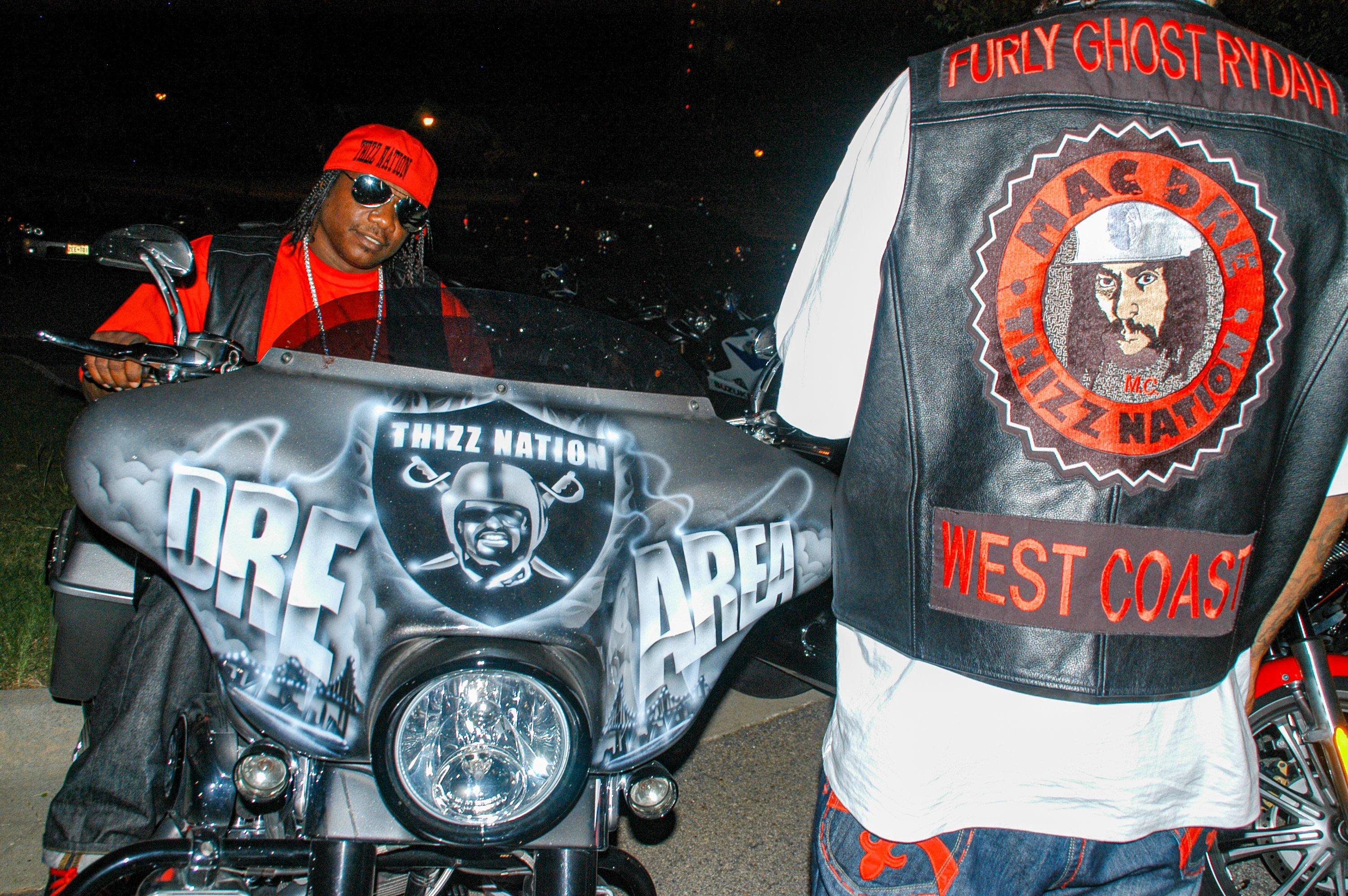
Photo: Julia Beverly/Getty Images
list
5 Ways Mac Dre's Final Living Albums Shaped Bay Area Rap
The rapper was killed just months after the simultaneous release of 'Ronald Dregan: Dreganomics' and 'The Genie of the Lamp.' Twenty years later, read on for how the releases that gave the world "Get Stupid" and "Feelin' Myself" reverberate in hip-hop.
Nearly two decades after his still-unsolved murder took place, Mac Dre remains one of Bay Area rap’s definitive artists and guiding spirits. The rapper born Andre Hicks helped to pioneer and steer the region’s hyphy movement — a music, linguistic, car and party culture that influenced rap and even electronic music globally.
Mac Dre released both his ninth album, Ronald Dregan: Dreganomics, and his 10th album The Genie of the Lamp on the same day: July 20, 2004. Although Mac Dre had been a key figure in the Bay's rap game for years, the two records were some of his most influential, and are now classics in the canon of early aughts hip-hop. The more popular of the pair, Ronald Dregan features "Feelin’ Myself" and "Get Stupid," party anthems that borrowed from rave culture’s sunnier outlook to give architectural shape to the emerging hyphy movement.
Learn more: 11 Hip-Hop Subgenres To Know: From Jersey Club To G-Funk And Drill
Mere months later, Mac Dre was killed in a drive-by shooting on a highway in Kansas City, Missouri on Nov. 1, 2004. His death still stings in grim contrast to the joy, fun and charisma that he brought to his music and live performances. "When Mac Dre got killed, it was like Martin Luther King in the Bay," rapper Too $hort told Revolt in 2022. "It was that kind of loss."
Fortunately, Ronald Dregan: Dreganomics and The Genie of the Lamp preserved him at his happiest musical peak. Twenty years later, GRAMMY.com examines how Mac Dre’s final living albums not only kickstarted a massive posthumous career and movement, but have remained musical and business inspirations for artists in Northern California and beyond.
They Hyped Up Hyphy
Mac Dre put out a DVD called TREAL TV in September 2003 that quickly became legendary throughout the Bay Area. The use of ecstasy and other party drugs most associated with raves at the time became a major theme in the hyphy music that came after his death, and TREAL TV features Mac Dre clowning around, cable access TV style, while intoxicated. ("I’m as high as a fire escape… I’m on everything right now," he says with a grin.)
There’s also footage of him performing live in small towns in Northern California and the Northwest, where people danced with hyper energy (and possibly those aforementioned drugs)and rapped along with all the words. It was the first time many people got to see how physically animated and infectious Mac Dre was as a performer. Bay Area rap music that came in the immediate years before him was largely a lot slower and more serious — one subset is even called "mobb music," suggesting sinister overtones. But TREAL TV showed how cool it was to be a happy gangster.
The momentum of TREAL TV, followed by the double album drop, brought Mac Dre to the forefront of the Bay Area’s burgeoning hyphy movement. Alongside fellow East Bay artist Keak da Sneak and hyphy-themed hits by veteran local artists Too $hort and E-40 produced by Atlanta’s Lil Jon, they would put the Bay Area back on the rap map for major record labels to sign and promote to the world.
Read more: A Guide To Bay Area Hip-Hop: Definitive Releases, Artists & Subgenres From Northern California
They Established Politics As Unusual
The political theme of Ronald Dregan: Dreganomics introduced a humorous political angle for Mac Dre’s songs. This theme would continue even after his passing, via posthumous works released by his mother "Mac" Wanda Salvatto on his Thizz Entertainment label.
Two popular posthumous compilations imagine the rapper in a high office: 2007’s Mac Dre Is Pill Clinton and 2008’s Dre Day - July 5th 1970. The latter features a cover illustration depicting Mac Dre as Uncle Sam with a thizz face (an expression he coined to describe a frown induced by happiness and getting intoxicated).
They Kept It P
There has always been a number of Bay Area artists who have been influenced by Oakland’s pimp culture, which was famously depicted in the 1973 movie The Mack. Some really tried their hand at the adult business, while others just rapped about it.
Both Ronald Dregan: Dreganomics and The Genie of the Lamp come from a perspective of pimping. Musically and lyrically, the former is more lighthearted and party-oriented, while the latter is more overtly street-focused and aggressive. On "My Alphabets" — a collaboration with Suga Free and Rappin’ 4-Tay, California rappers known for rapping heavily about the profession — Dre raps, "You can’t con me/ I’ll slice yo ass thin as salami."
While by no means the only topic tackled in Bay Area rap at the time or today, Mac Dre did his part to keep it alive within the culture, for better or worse, for decades after his death.
They Allowed Mac Dre To Have Life After Death
Without the attention generated by TREAL TV, Ronald Dregan: Dreganomics and The Genie of the Lamp, Mac Dre would not have had the outsized posthumous career that he does. Mac Wanda has lovingly kept her son’s musical legacy alive with the aforementioned posthumous releases and via her own interviews for research projects such as the 2015 documentary Mac Dre: Legend of the Bay.
Just like the late Tupac Shakur’s estate has done, Mac Dre’s posthumous catalog is both robust and highly bootlegged. Official releases on the Thizz Entertainment label have given opportunities to artists in the Bay Area and even in Alaska to share their music with the world through albums and various artist compilations.
They Spawned Many Living Tributes
Mac Dre has had a lasting effect on artists in the generations that have come after him, in the Bay Area and beyond; see Drake and Lil Wayne’s "The Motto" (2011), which interpolates lyrics from Dre’s "Feelin’ Myself," or "Stupid," the new single from YG featuring Lil Yachty and Babyface Ray, which references ecstasy and Mac Dre’s use of the word stupid as a positive term.
Mistah F.A.B.’s 2016 song "Still Feelin’ It" is one of many tributes he’s done in Mac Dre’s memory and offers vivid evidence of how the late MC influenced him to become a strong songwriter, entrepreneur and philanthropist. And you’ll hear echoes of Mac Dre (both figuratively and literally via samples) in promising Bay Area artists who were too young to know Mac Dre, like Guapdad 4000, who released a "Mac Dre Freestyle" that references "Dreganomics" in 2024.
Mac Dre Day events, typically held on or around July 5 to celebrate his birthday, have been a staple in various Northern California cities since his passing. For many, they are a rite of passage of growing up in the Bay Area rap scene. Whether revisiting or listening for the first time, Mac Dre’s 2004 albums still sound fun in 2024, a testament to the lasting legacy of a late artist from the San Francisco Bay Area who just wanted to make his mark.
More Rap News

Ice Spice Is The Drill Queen On 'Y2K!': 5 Takeaways From Her Debut Album

Watch Young MC Win Best Rap Performance In 1990

On Rakim's 'G.O.D's Network (REB7RTH)' The MC Turned Producer Continues His Legacy With An All-Star Cast

5 Ways Mac Dre's Final Living Albums Shaped Bay Area Rap

Denzel Curry Returns To The Mischievous South: "I've Been Trying To Do This For The Longest"
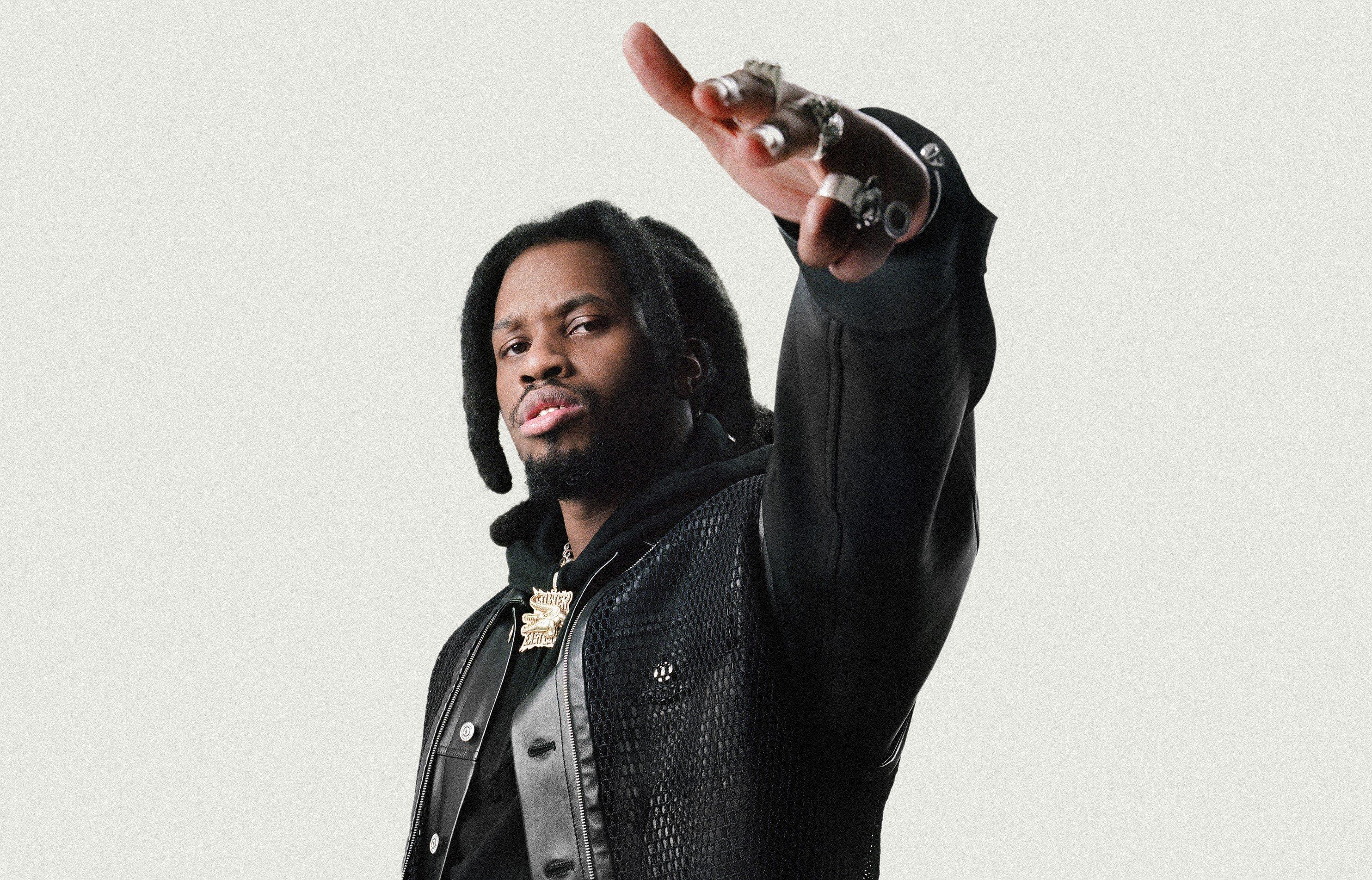
Photo: Giovanni Mourin
interview
Denzel Curry Returns To The Mischievous South: "I've Been Trying To Do This For The Longest"
Over a decade after he released 'King of the Mischievous South Vol. 1,' Denzel Curry is back with 'Vol. 2.' The Miami rapper details his love of Southern hip-hop, working on multiple projects, and the importance of staying real.
Denzel Curry isn’t typically one for repetition. His recent run of critically acclaimed projects have all contrasted in concept and musicality.
The Miami Gardens native has cascaded through boom-bap, synth-soaked trap metal, and cloud rap throughout his catalog. But on his upcoming project, King of the Mischievous South Vol. 2, Curry returns to the muddied, subwoofer-thudding soundscape that he captured on the first installment back in 2012.
Curry was just 16 when he released King of the Mischievous South Vol. 1 Underground Tape 1996]. "I was a kid, man," Curry tells GRAMMY.com. "I was just trying to emulate my favorite rappers at the time who really represented the South. That was pretty much what I was on at the time – the Soulja Slims, the No Limits, but mostly Three 6 Mafia. And then I just put Miami culture on top of that."
Curry first explored the rough-cut "phonk" of Southern acts like DJ Screw and Pimp C as a teenager. His first mixtape, King Remembered Underground Tape 1991-1995, caught the attention of then-rising rapper and producer SpaceGhostPurrp. He shared Curry’s project on his social media accounts, making him an official member of South Florida’s Raider Klan.
Read more: A Guide To Southern Hip-Hop: Definitive Releases, Artists & Subgenres From The Dirty South
The now-defunct group is well behind Curry, who’s ascended from the infancy of his early SoundCloud days to mainstream success. But the rapid-fire delivery and hazy, rough-cut sounds of early Southern rap are still soaked into his musical fibers.
Reignited by the same musical heroes that led to Vol. 1, Curry is comfortable in old sonic form. Vol. 2's lead singles "Hot One" (feat. A$AP Ferg and TiaCorine) and "Black Flag Freestyle" with That Mexican OT fully capture the sharp-edged sound that stretched from Port Arthur, Texas to the Carolinas.
The rapper wanted to go back to the KOTMS series nearly a decade ago, but other projects and outside ventures derailed his return. "I tried to do this thing multiple times," Curry tells GRAMMY.com. "I remember revisiting a [social media post] from 2015 that was like, ‘KOTMS Vol. 2055 is now going to be called Imperial.’ I’ve been trying to do this for the longest."
A string of bouncy, syrup-pouring, and playalistic Southern trap songs led him back to familiar grounds. The new 15-song capsule features Juicy J, 2 Chainz, Project Pat, That Mexican OT, Maxo Kream, and others inspired by the same pioneers that fall below the Mason-Dixon line.
GRAMMY.com sat down with Curry before the release of King of the Mischievous South Vol. 2 on July 19. The "Ultimate" rapper revealed his "Big Ultra" persona, his ability to crank out hits from his bedroom, and his recent discoveries being "outside."
This interview has been lightly edited for clarity and length.
What inspired you to revisit the 'King of the Mischievous South' series?
I was making two projects at once, and there was a through-line from the second half of the project. The second one I was working on kind of just manifested itself into what it is today, 12 years later. And it’s called King of the Mischievous South Vol. 2 because it has the same sonics as the first one.
You mentioned Three 6 Mafia being a big inspiration for Vol. 1. But what about Vol. 2?
The first KOTMS was obviously Three 6 Mafia, and then Lord Infamous was really the person I looked up to, God rest his soul. I get my rap style from him — the rapid flows and stuff like that. You can even hear it on "Walkin’" and "Clout Cobain." But since I’m from Miami, I’m talking about stuff that predominantly happens in Miami. And I’m influenced by Soulja Slim, Master P, DJ Screw, UGK, Trina, Trick Daddy, and Rick Ross.
How did you juggle the two different projects at once?
When I wasn’t working on one project, I was working on the other one. Sometimes I would be working on the same two projects on the same day. I was like, If this one won’t see the light of day until next year, this one has to hold fans over. And the one that was supposed to hold fans over ended up having a crazy through-line.
What were the studio sessions like?
When it came down to the production, I was just making these songs on the fly. A couple came out of Ultraground sessions, but the majority of the songs were made in my bed — just how it was with the first one. "Hot One" was made in my house downstairs, and "Hit The Floor" was made in a random room in an AirBnb. And I think the rest of the songs were made in an actual studio.
I was just flowing, doing my thing, and figuring things out. I was working on one project, and when I wasn’t getting called back to the studio, I was working on another one on the side. The grind didn’t stop.
Was there an element or feature that you really wanted to explore?
I just knew I wanted certain rappers to be featured on [project]. When I was working on "Set It," I originally wanted PlayThatBoiZay. But he didn’t get the record done or whatever the case may be. So, I sent it to Maxo Kream, and he ended up just doing it. And when I made "Wish List," I got Armani White on it. Me and him came off of doing "Goated," so getting that record done was really simple. He pulled up to the studio and he said, "This is tight," and then jumped on the record.
Some stuff didn’t make the cut because we couldn’t get certain people. But the majority of the stuff that made the cut, we were like, "Yes, we did that." Then having people like Ski Mask the Slump God, 2 Chainz, Project Pat, and Juicy J — all these guys played a role. I’m getting people from the South, whether they’re from Texas, Florida, or the Carolinas. And even people outside of the South, like A$AP Ferg and Armani White, they’re all influenced by the same artists.
Learn more: A Guide To Texas Hip-Hop: Definitive Releases, Artists & Events
Your persona on the album, "Big Ultra." Break that down for me.
This is how the name came about — my boy’s nickname is Mr. Don’t Fold. It’s kind of a play on "Mr. Don’t Play," so we came up with "Big Ultra" because I’m doing "ultraground" stuff. It wasn’t on some superpower s—, it’s just me, pretty much. It’s how I wanted to be presented on this tape. It’s just me at the end of the day, it’s no persona.
You’ve been in the rap game for a while. Do you consider yourself a veteran?
I think I’m mostly in a formation period because my best years haven’t even happened yet. I feel like I’m just getting my reps in, preparing myself for my 30s. You know, going through the bulls—, having good times, having bad times.
By the time I get to 30, 35, and 40 — God willing — I could have a fruitful career and not be backtracked by dumb s—. I see myself as someone with a lot to offer because I’m still young.
Do you care about garnering more fame or acclaim? Or is there no need for it?
All my projects are critically acclaimed. The main thing is staying good at what I do. That comes with a lot of effort, a lot of studying, and a lot of work. I take pride in my job and I have fun making music.
I think the hardest part is putting myself out there and being visible. I’m starting to understand that’s what I had to do. I got asked the same question five times in a row about when my album was dropping. I’ve been saying July 19 for the longest. Like, people really haven’t been paying attention? C’mon, bro.
What do you feel is the next step?
I’m just trying to be more visible where the younger generation is at. Most people know me for "Ultimate," "Clout Cobain," or the [XXL Freshman Class] Cypher if I’m being totally real with you. But in due time, everybody has blessings in certain parts of their career. And I’ve been blessed to have a career this long.
All I have to do is just deliver, be real with myself, and do what I have to do. I got to lean into being outside. I didn’t know who messed with me or who liked my stuff until I started going outside and talking to people. You never know who rocks with you until you're outside.
As far as the music and experience, where does the album rank for you?
I didn’t think about where I’d rank this. We had a whole decade of producing great records, and people look forward to the album experience more than the single when it comes to me. This is what it is, and I just want people to enjoy it. It’s not something to put too much effort or thought into. It’s something you can bump into the club, or you could go to a show and turn up to it. That’s where I’m at with it.
Are there any other sounds or genres you want to explore?
It’s going to happen when it’s supposed to happen naturally. But I do want to explore pop and R&B a year from now. I want people to be able to sing my songs and stuff like that.
Latest Rap News & Music

Ice Spice Is The Drill Queen On 'Y2K!': 5 Takeaways From Her Debut Album

Watch Young MC Win Best Rap Performance In 1990

On Rakim's 'G.O.D's Network (REB7RTH)' The MC Turned Producer Continues His Legacy With An All-Star Cast

5 Ways Mac Dre's Final Living Albums Shaped Bay Area Rap

Denzel Curry Returns To The Mischievous South: "I've Been Trying To Do This For The Longest"
